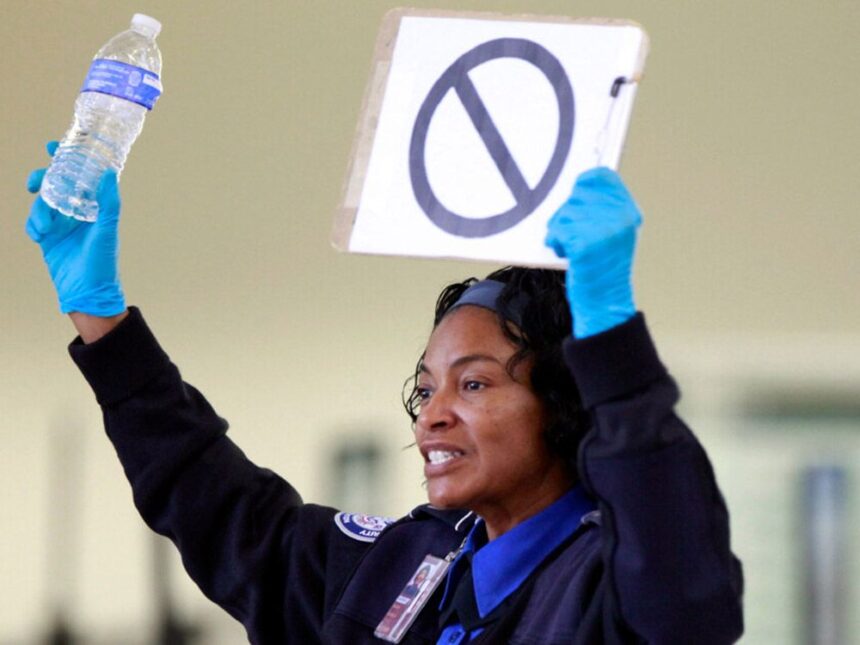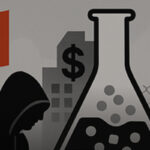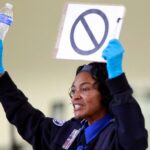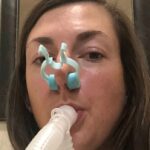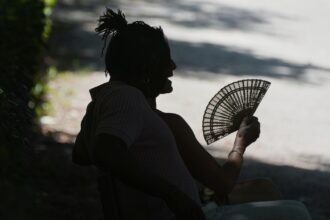The days of frantically transferring shampoo into tiny containers before a flight to the United States might soon be coming to an end, as the Transportation Security Administration (TSA) signals a potential revolutionary shift in its liquid carry-on restrictions. For Canadian travelers accustomed to the familiar “3-1-1 rule” when heading south of the border, this development represents the most significant aviation security adjustment since the post-9/11 era began.
The TSA announced last week it will begin testing new advanced checkpoint scanners capable of detecting explosives in liquids, potentially eliminating the need for passengers to remove toiletries from their bags during screening. This technology, already operational at select American airports including Atlanta’s Hartsfield-Jackson and Las Vegas’s Harry Reid International, uses computed tomography (CT) imaging to create detailed 3D images of bag contents.
“The advanced technology creates such a clear picture of a bag’s contents that computers can automatically detect explosives, including liquids,” said TSA Administrator David Pekoske in a statement. “This breakthrough addresses our primary security concern while potentially alleviating a major passenger pain point.”
For Canadian travelers who frequently cross the border, this shift could dramatically streamline their airport experience. Current rules, implemented in 2006 following a foiled plot to detonate liquid explosives on transatlantic flights, restrict passengers to liquids, gels and aerosols in containers of 100ml (3.4 ounces) or less, all fitting within a single quart-sized clear plastic bag.
The business community has largely welcomed the announcement. The U.S. Travel Association estimates that removing liquid restrictions could reduce screening times by up to 30%, potentially saving the American economy billions in productivity annually. Canadian business groups have echoed this sentiment, noting the change could particularly benefit frequent business travelers between major Canadian and U.S. hubs.
However, security experts caution that implementation will be gradual. “This isn’t happening overnight across all airports,” explains John Wheeler, former director of Homeland Security under President George W. Bush. “The rollout requires significant infrastructure investment and training. Canadian travelers should expect a patchwork system for several years where some U.S. airports maintain old restrictions while others adopt new protocols.”
The Canadian Air Transport Security Authority (CATSA) has not yet announced whether it plans to follow the American lead, creating potential confusion for travelers. A CATSA spokesperson told CO24 that they are “closely monitoring developments in the United States” but emphasized that “current restrictions remain in place for all Canadian airports until further notice.”
Political analysts note the timing of the announcement may be connected to the upcoming U.S. election cycle. “Transportation security reforms that reduce passenger inconvenience without compromising safety tend to be popular across party lines,” notes Dr. Melissa Chen, professor of political science at University of Toronto. “This initiative began under the previous administration and continues under the current one, showing rare bipartisan support.”
The TSA expects to have the new scanners in place at more major airports by summer 2024, with complete nationwide implementation targeted by 2026. Until then, travelers are advised to continue following existing liquid restrictions unless specifically informed otherwise at their departure airport.
For Canadians planning U.S. travel in the coming year, the message is clear: check the specific rules for your destination airport before packing, and perhaps keep those travel-sized toiletries handy just a bit longer. As world travel slowly returns to pre-pandemic levels, could this technological advancement finally eliminate one of the most persistent irritants of modern air travel, or will security concerns ultimately keep our liquids restricted for years to come?

